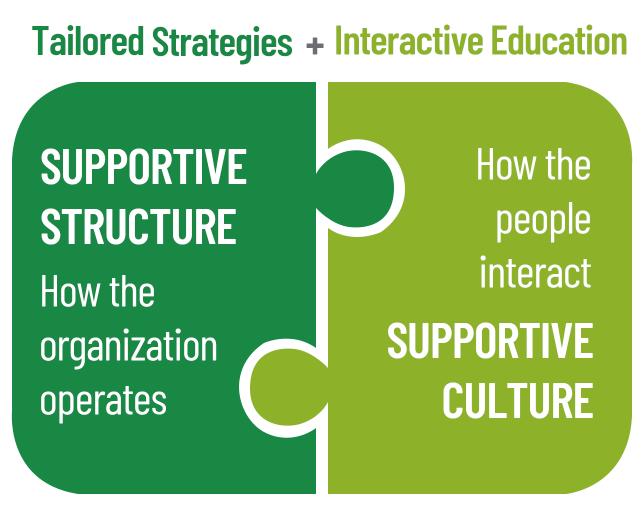Cultural and Structural Changes: Bringing Inclusion to Life in Your Workplace
What happens when transgender employees don’t feel accepted and valued at work?
Holding down a job can be stressful at times for all of us. Imagine the additional weight of trying to hide or suppress a core aspect of who you are — your gender identity — for fear of being excluded or ignored by those you work with. Or imagine coming out as transgender at your workplace and encountering misgendering, jokes, and complete lack of support.
Sadly, this is a reality for many transgender people in the workplace. They often experience discrimination or feel pressure to hide their true selves and “adapt” to what colleagues and customers are expecting them to be.
This can impact their mental and physical health, and ultimately, their decision to remain with their employer. Conversely, a failure to adopt trans-specific measures can cost businesses dearly in terms of higher turnover, decreased engagement and productivity, and damage to the brand image.
Forward-thinking businesses around the world are becoming more aware of the need to support transgender employees along with the benefits it brings.
The question is, where to start?
Take the quiz!
We invite you to take our Readiness Quiz, which only takes a minute, to understand where your organization may be inadvertently excluding transgender people.
And when you finish the quiz, take a few minutes to read how TransFocus can help your organization be more inclusive of transgender employees…
The comprehensive framework
At TransFocus, we’ve developed a comprehensive framework for creating a workplace that accounts for the unique needs of transgender people. We’ve broken it down into two areas – Culture and Structure – and designed education and strategies to address persistent issues in each area.
To get a better sense of our framework, let’s start with what Culture and Structure mean...
Culture
Definition of culture:
When we talk about corporate culture, it goes beyond the general consensus of belonging in the workplace. It’s really about taking someone’s lived experience, identity, and perspective into consideration.
Culture includes interpersonal interactions and group dynamics among employees and/or customers that make up the workplace environment. Depending on the levels of unconscious bias and lack of awareness, this environment can be more or less inclusive and supportive of gender diversity.
So, what does this mean for your organization?
What it boils down to is the way employees and/or customers interact with each other in ways that reference gender without them being aware. It’s the overarching tone that people are met with when they enter an environment, and deal with in everyday interactions between individuals and groups.
It’s about the conversations we have that, we may not realize, are often based on someone’s perceived gender identity… and assumptions that people bring to interactions that can make it complicated or harmful for transgender people. This is particularly at play when we’re meeting people for the first time. Based on how someone looks or what their name is, we often make assumptions about their pronouns, their needs, and spaces they use. There is an unconscious bias that we often bring to the mix.
This is a corporate culture conversation that is just beginning to happen, or in some cases needs to happen, and more could be done through education.
Structure
Definition of structure:
Structures include organizational systems, spaces, and protocols that are used to operate the business. With regard to gender diversity, structures include information systems, washrooms, forms, procedures, and communication materials, which are frequently sites for unintended exclusion of transgender people.
So, what does this mean for your organization?
Your organization may have developed a culture of inclusion and acceptance, but you could still be inadvertently discriminating against transgender people if you have not reviewed and revised your structures. While you warmly welcome transgender employees and customers, there may still be barriers to full participation because many corporate structures are primarily designed for cisgender men and women. Cultural changes only bring organizations so far; structural changes complete the picture. More transgender people are coming forward when they encounter these challenges; however, organizations can be more pre-emptive to spare transgender people this extra effort.
If this is the case for your organization, you’re not alone. Systemic discrimination is happening in most businesses, and far too often the source of the issues remains invisible.
This diagram provides structural examples of systemic discrimination:
Next steps
Please reach out to us to learn more about how we can help your organization make transgender people feel more welcome and accepted within your organization’s culture and structures.




